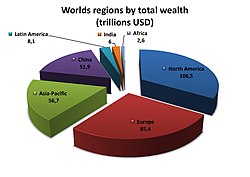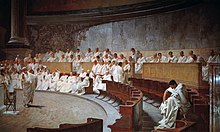| Four Asian Tigers | |||
|---|---|---|---|

| |||
| Chinese name | |||
| Traditional Chinese | 亞洲四小龍 | ||
| Simplified Chinese | 亚洲四小龙 | ||
| Literal meaning | Asia's Four Little Dragons | ||
| |||
| Korean name | |||
|---|---|---|---|
| Hangul | 아시아의 네 마리 용 | ||
| Hanja | 아시아의 네 마리 龍 | ||
| Literal meaning | Asia's four dragons | ||
| |||
| Malay name | |||
|---|---|---|---|
| Malay | Empat Harimau Asia | ||
| Tamil name | |||
| Tamil | நான்கு ஆசியப் புலிகள் | ||
The Four Asian Tigers (also known as the Four Asian Dragons or Four Little Dragons in Chinese and Korean) refer to the economies of Hong Kong, Singapore, South Korea and Taiwan. Between the early 1960s and 1990s, they underwent rapid industrialization and maintained exceptionally high growth rates of more than 7 percent a year.
By the early 21st century, all had developed into high-income economies, specializing in areas of competitive advantage. Hong Kong and Singapore have become leading international financial centres, whereas South Korea and Taiwan are leaders in manufacturing electronic components and devices. Their economic success have served as role models for many developing countries, especially the Tiger Cub Economies of southeast Asia.
In 1993, the World Bank report The East Asian Miracle credited neoliberal policies to have caused the economic boom, including the maintenance of export-oriented policies, low taxes, and minimal welfare states. Institutional analyses also state some state intervention was involved.
However, others argued that industrial policy and state intervention
had a much greater influence than the World Bank report suggested.
Overview
Growth in per capita GDP in the tiger economies between 1960 and 2014
Prior to the 1997 Asian financial crisis,
the growth of the Four Asian Tiger economies (commonly referred to as
"the Asian Miracle") has been attributed to export oriented policies and
strong development policies. Unique to these economies were the
sustained rapid growth and high levels of equal income distribution. A
World Bank report suggests two development policies among others as
sources for the Asian miracle: factor accumulation and macroeconomic
management.
The Hong Kong economy underwent industrialization with the
development of a textile industry in the 1950s. By the 1960s,
manufacturing in the British colony had expanded and diversified to
include clothing, electronics, and plastics for export orientation. Following Singapore's independence, the Economic Development Board formulated and implemented national economic strategies to promote the country's manufacturing sector. Industrial estates
were set up and foreign investment was attracted to the country with
tax incentives. Meanwhile, Taiwan and South Korea began to industrialize
in the mid-1960s with heavy government involvement including
initiatives and policies. Both countries pursued export-oriented
industrialization as in Hong Kong and Singapore.
The four countries were inspired by Japan's evident success, and they
collectively pursued the same goal by investing in the same categories:
infrastructure and education. They also benefited from foreign trade
advantages that sets them apart from other countries, most significantly
economic support from the United States; part of this is manifested in
the proliferation of American electronic products in common households
of the Four Tigers.
By the end of the 1960s, levels in physical and human capital
in the four economies far exceeded other countries at similar levels of
development. This subsequently led to a rapid growth in per capita income
levels. While high investments were essential to their economic growth,
the role of human capital was also important. Education in particular
is cited as playing a major role in the Asian economic miracle. The
levels of education enrollment in the Four Asian Tigers were higher than
predicted given their level of income. By 1965, all four nations had
achieved universal primary education. South Korea in particular had achieved a secondary education enrollment rate of 88% by 1987.
There was also a notable decrease in the gap between male and female
enrollments during the Asian miracle. Overall these advances in
education allowed for high levels of literacy and cognitive skills.
Worlds regions by total wealth (in trillions USD), 2018
The creation of stable macroeconomic
environments was the foundation upon which the Asian miracle was built.
Each of the Four Asian Tiger states managed, to various degrees of
success, three variables in: budget deficits, external debt and exchange rates.
Each Tiger nation's budget deficits were kept within the limits of
their financial limits, as to not destabilize the macro-economy. South
Korea in particular had deficits lower than the OECD average in the 1980s. External debt was non-existent for Hong Kong, Singapore and Taiwan, as they did not borrow from abroad.
Although South Korea was the exception to this - its debt to GNP ratio
was quite high during the period 1980-1985, it was sustained by the
country’s high level of exports. Exchange rates in the Four Asian Tiger
nations had been changed from long-term fixed rate regimes to
fixed-but-adjustable rate regimes with the occasional steep devaluation
of managed floating rate regimes.
This active exchange rate management allowed the Four Tiger economies
to avoid exchange rate appreciation and maintain a stable real exchange
rate.
Export policies have been the de facto reason for the rise of
these Four Asian Tiger economies. The approach taken has been different
among the four nations. Hong Kong, and Singapore introduced trade
regimes that were neoliberal in nature and encouraged free trade, while
South Korea and Taiwan adopted mixed regimes that accommodated their own
export industries. In Hong Kong and Singapore, due to small domestic
markets, domestic prices were linked to international prices. South
Korea and Taiwan introduced export incentives for the traded-goods
sector. The governments of Singapore, South Korea and Taiwan also worked
to promote specific exporting industries, which were termed as an
export push strategy. All these policies helped these four nations to
achieve a growth averaging 7.5% each year for three decades and as such
they achieved developed country status.
Dani Rodrik, economist at the John F. Kennedy School of
Government at Harvard University, has in a number of studies argued that
state intervention was important in the East Asian growth miracle.
He has argued "it is impossible to understand the East Asian growth
miracle without appreciating the important role that government policy
played in stimulating private investment".
1997 Asian financial crisis
The Tiger economies experienced a setback in the 1997 Asian financial crisis.
Hong Kong came under intense speculative attacks against its stock
market and currency necessitating unprecedented market interventions by
the state Hong Kong Monetary Authority. South Korea was hit the hardest as its foreign debt burdens swelled resulting in its currency falling between 35–50%.
By the beginning of 1997, the stock market in Hong Kong, Singapore, and
South Korea also saw losses of at least 60% in dollar terms. Singapore
and Taiwan were relatively unscathed. The Four Asian Tigers recovered
from the 1997 crisis faster than other countries due to various economic
advantages including their high savings rate (except South Korea) and
their openness to trade.
2008 financial crisis
The export-oriented tiger economies, which benefited from American consumption, were hit hard by the financial crisis of 2007–08. By the fourth quarter of 2008, the GDP of all four nations fell by an average annualized rate of around 15%.
Exports also fell by a 50% annualized rate.
Weak domestic demand also affected the recovery of these economies. In
2008, retail sales fell 3% in Hong Kong, 6% in Singapore and 11% in
Taiwan.
As the world recovered from the financial crisis, the Four Asian
Tiger economies have also rebounded strongly. This is due in no small
part to each country's government fiscal stimulus measures. These fiscal
packages accounted for more than 4% of each country's GDP in 2009.
Another reason for the strong bounce back is the modest corporate and household debt in these four nations.
A recent article published in Applied Economics Letters by
financial economist Mete Feridun of University of Greenwich Business
School and his international colleagues investigates the causal
relationship between financial development and economic growth for Thailand, Indonesia, Malaysia, the Philippines, China, India and Singapore for the period between 1979 and 2009, using Johansen cointegration tests and vector error correction models.
The results suggest that in the case of Indonesia, Singapore, the
Philippines, China and India financial development leads to economic
growth, whereas in the case of Thailand there exists a bidirectional
causality between these variables. The results further suggest that in
the case of Malaysia, financial development does not seem to cause
economic growth.
Gross domestic product (GDP)
In 2018, the combined economy of the Four Asian Tigers constituted 3.46% of the world's economy with a total Gross Domestic Product (GDP)
of 2,932 billion US dollars. The GDP in Hong Kong, Singapore, South
Korea and Taiwan was worth 363.03 billion, 361.1 billion, 1,619.42
billion and 589.39 billion US dollars respectively in 2018, which
represented 0.428%, 0.426%, 1.911% and 0.696% of the world economy.
Together, their combined economy surpassed the United Kingdom's GDP of 3.34% of the world's economy some time in the mid 2010s.
Education and technology
These four countries had invested heavily in their infrastructure as
well as in developing the intellectual abilities of their human talent,
fostering and retaining their educated population to help further
develop and improve their respective countries. This policy turned out
to be so effective that by the late 20th century, all four countries had
developed into advanced and high-income industrialized developed countries,
developing many different areas of advanced technology that give them a
tremendous competitive advantage in the world. For example, all four
countries have become top level global education centers with Singapore,
Taiwan, South Korea and Hong Kong high school students consistently
outperforming all other countries in the world and achieving the highest
top scores on international math and science exams such as the PISA exam and with Singaporean and Taiwanese students winning multiple gold medals every year consistently at the International Biology Olympiad, International Linguistics Olympiad, International Physics Olympiad, International Earth Science Olympiad, International Mathematical Olympiad and International Chemistry Olympiad.
Additionally, these four countries are home to some of the most prestigious top ranking universities in the world such as National Taiwan University, Seoul National University, National University of Singapore, Nanyang Technological University and University of Hong Kong, Faculty of Dentistry, which as of 2017, was ranked as the number one top dental school in the world.
While Taiwan and South Korea invested in technological innovation and
development, Hong Kong and Singapore also pursued a path of finances and
both became world-leading international financial centers. Inspired in part by Japan's
technological and economic success, two of the earliest countries to
pursue a similar path of cutting edge science and technology development
were Taiwan, Singapore and South Korea, which have both become advanced innovative world leaders in state of the art technologies including medical science, computer technology, biotechnology, space technology (manned spacecraft & robots), military technology stealth technology, robotics and information technology manufacturing.
Taiwan, Singapore and South Korea achieved this by promoting
technological innovation, research and development, and export-oriented
industrialization which turned an initially post-World War 2 poor
agricultural economy into two thriving economic and technological
superpowers on the same competitive level as Japan and the United States.
Cultural basis
The role of Confucianism has been used to explain the success of the Four Asian Tigers. This conclusion is similar to the Protestant work ethic theory in the West promoted by German sociologist Max Weber in his book The Protestant Ethic and the Spirit of Capitalism. The culture of Confucianism
is said to have been compatible with industrialization because it
valued stability, hard work, discipline, and loyalty and respect towards
authority figures.
There is a significant influence of Confucianism on the corporate and
political institutions of the Asian Tigers. Prime Minister of Singapore Lee Kuan Yew advocated Asian values as an alternative to the influence of Western culture in Asia.
This theory was not without its critics. There was a lack of mainland
Chinese economic success during the same time frame as the Four Tigers,
and yet China was the birthplace of Confucianism. During the May Fourth Movement of 1919, Confucianism was blamed for China's inability to compete with Western powers.
In 1996, the economist Joseph Stiglitz pointed out that,
ironically, "not that long ago, the Confucian heritage, with its
emphasis on traditional values, was cited as an explanation for why
these countries had not grown."








